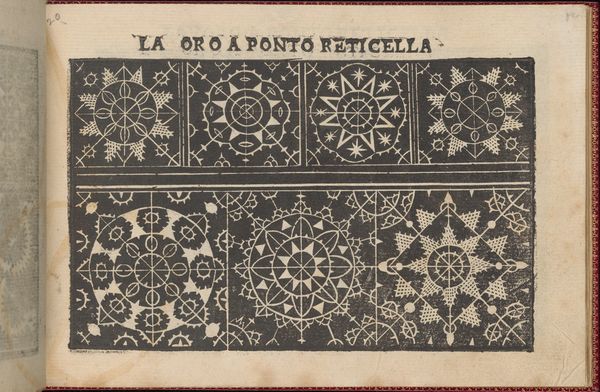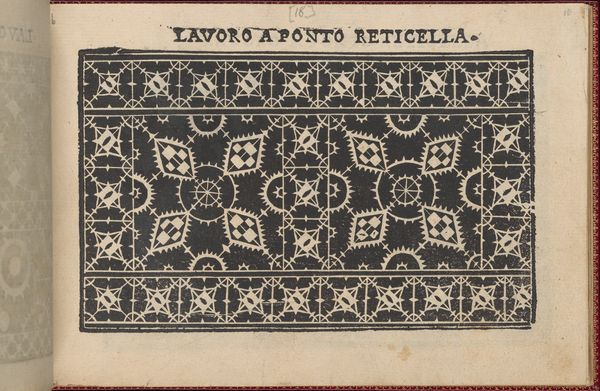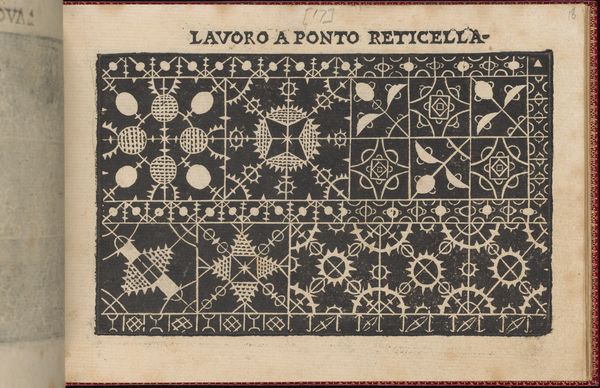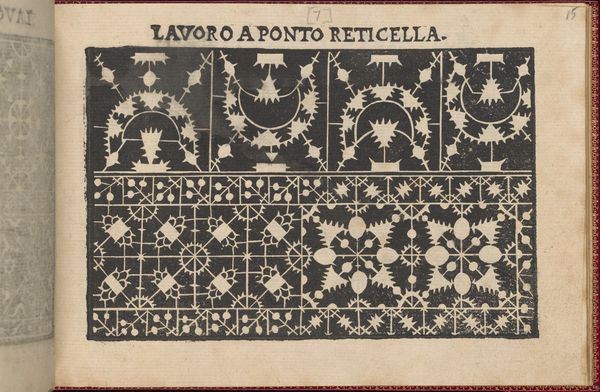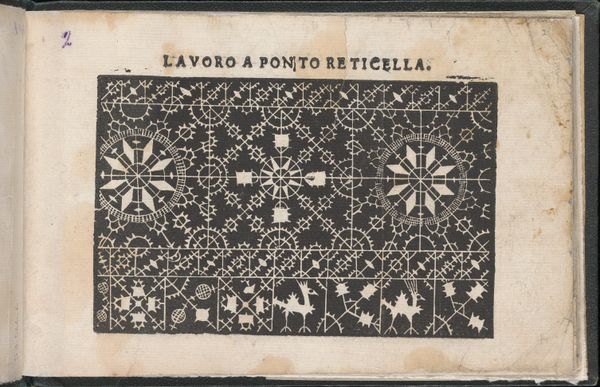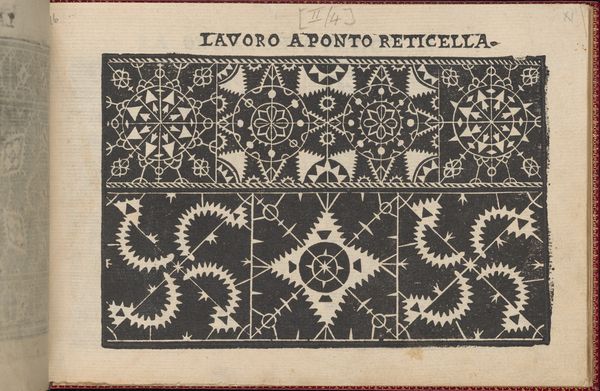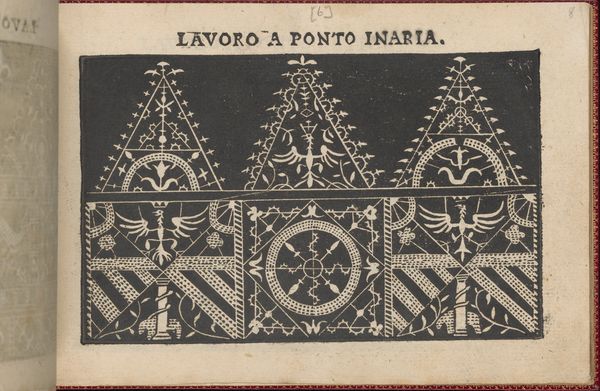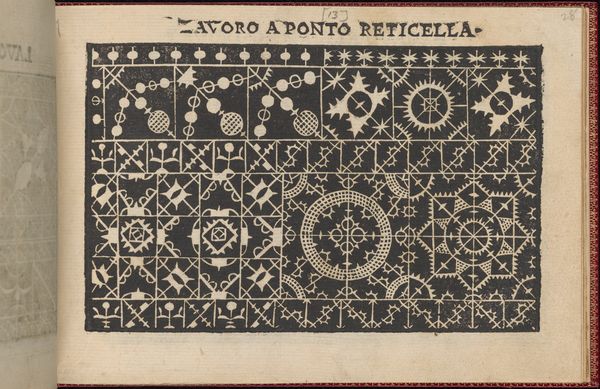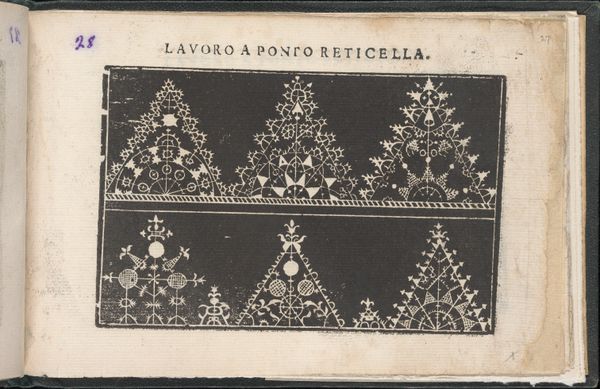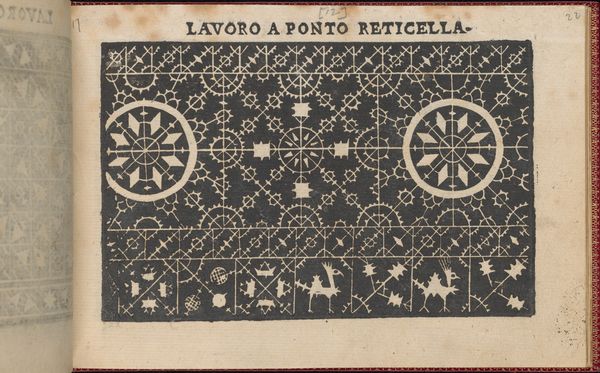
Pretiosa Gemma delle virtuose donne, page 26 (recto) 1600
0:00
0:00
drawing, ornament, print
#
drawing
#
ornament
# print
#
book
#
geometric
#
italian-renaissance
Dimensions: Overall: 4 3/4 x 6 11/16 in. (12 x 17 cm)
Copyright: Public Domain
Curator: Good morning! Today, we are looking at a page from "Pretiosa Gemma delle virtuose donne" ("Precious Gem of Virtuous Women"), page 26 (recto), dating back to about 1600, originating from the Italian Renaissance. The piece you’re viewing is an ornament design print, likely a page from a book. Editor: I’m immediately struck by the delicate intricacies of these patterns! It's almost meditative, a rhythmic repetition that calms the eye. The high contrast black and white really emphasizes the geometric nature of each individual shape and how it plays into the collective design. Curator: Precisely. The book, and particularly this page, showcases designs intended for needlework, specifically "Lavori a ponto reticella" which, literally translated, is cutwork or drawn thread work. This was an important part of domestic craft for women during that period, and its rise speaks volumes. Editor: Absolutely! This reminds us that art, beauty, and complex artistry wasn't always destined for a museum wall; it often thrived within the domestic sphere. Consider the sociopolitical implications! Women were often restricted, denied access to education and professions available to men, but creativity was still expressed through embroidery and lace. It's a quiet resistance woven into daily life. Curator: It’s also worth considering the sheer skill involved. Look at the symmetry and precision in each motif! These weren’t simply random doodles, but mathematically intricate designs passed from one generation to the next. The designs allowed even noble women a small occupation and creative outlet in their life that society otherwise controlled. Editor: And we can see the beginnings of industrial reproduction! A print allowed for wide dissemination of design which would lead to the development of broader audiences of the style. How incredibly accessible in a time where such artistic instruction was extremely rare. Curator: It also speaks to the agency of the artist, Isabella Catanea Parasole. This was a profession, and her art helped facilitate and promote other women as a collective force. Editor: Thinking about Isabella and all the nameless hands guided by her book, piecing these delicate works, transforms this page from a design guide into a cultural testament to the ingenuity born from limitations, an expression of community. Curator: A powerful and beautifully subversive undercurrent flowing right through what may initially seem like simple ornamentation. It is worth the exploration, time and time again!
Comments
No comments
Be the first to comment and join the conversation on the ultimate creative platform.
